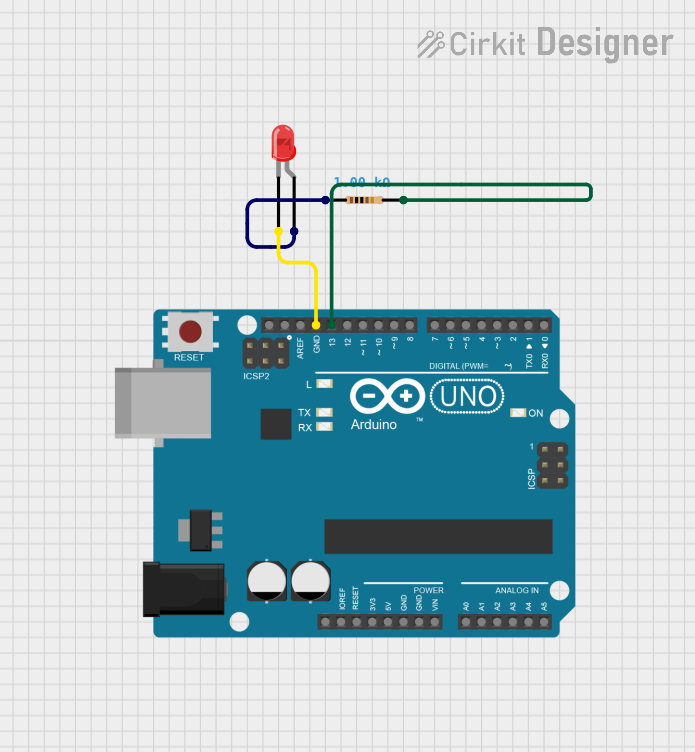
Cirkit Designer
Your all-in-one circuit design IDE
Home /
Project Documentation
Arduino UNO Controlled Blinking LED Circuit

Circuit Documentation
Summary of the Circuit
This circuit consists of an Arduino UNO microcontroller, a red two-pin LED, and a resistor. The purpose of the circuit is to blink the LED on and off at a regular interval of one second. The Arduino UNO controls the LED state using one of its digital pins. The resistor is used to limit the current flowing through the LED to prevent damage.
Component List
Arduino UNO
- Description: A microcontroller board based on the ATmega328P.
- Pins Used:
- GND
- D13
LED: Two Pin (red)
- Description: A basic red light-emitting diode.
- Pins:
- Cathode
- Anode
Resistor
- Description: A passive two-terminal electrical component that implements electrical resistance as a circuit element.
- Properties:
- Resistance: 1000 Ohms
Wiring Details
Arduino UNO
- GND is connected to the cathode of the LED.
- D13 is connected to pin2 of the Resistor.
LED: Two Pin (red)
- Cathode is connected to the GND of the Arduino UNO.
- Anode is connected to pin1 of the Resistor.
Resistor
- Pin1 is connected to the anode of the LED.
- Pin2 is connected to D13 on the Arduino UNO.
Documented Code
The following code is written for the Arduino UNO microcontroller to control the blinking of the LED.
// Constants
const int ledPin = 13; // Pin where the LED is connected
void setup() {
// Initialize the digital pin as an output
pinMode(ledPin, OUTPUT);
}
void loop() {
// Turn the LED on (HIGH is the voltage level)
digitalWrite(ledPin, HIGH);
delay(1000); // Wait for a second
// Turn the LED off by making the voltage LOW
digitalWrite(ledPin, LOW);
delay(1000); // Wait for a second
}
- File Name: sketch.ino
- Description: This code sets up pin D13 as an output to control the LED. In the loop function, it turns the LED on for one second and then off for one second, creating a blinking effect.